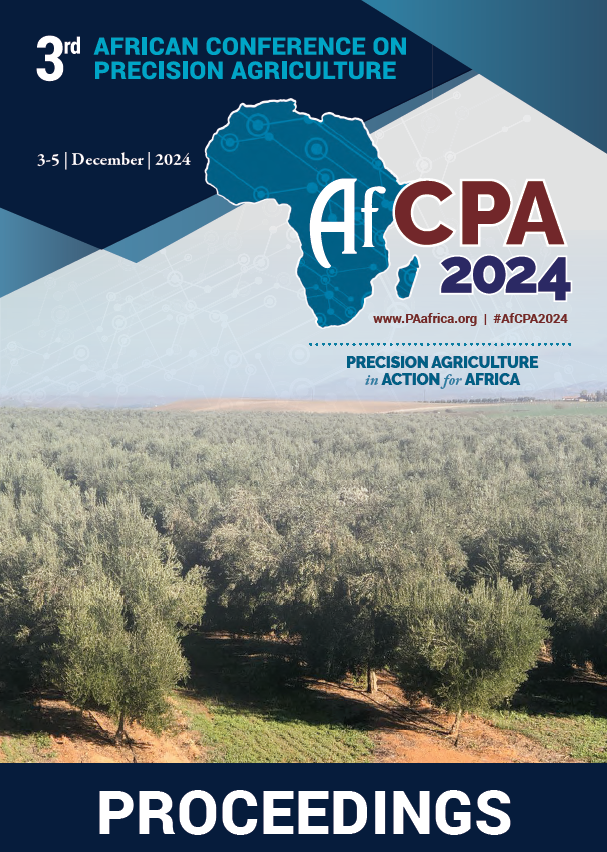Download the Conference Proceedings
Proceedings
Authors
| Filter results4 paper(s) found. |
|---|
1. CropSAT – opportunities for applications in precision agriculture in AfricaThe present paper aims at describing the CropSAT system, a Sentinel-2-based interactive decision support system (DSS) that provides vegetation index (VI) maps free-of-charge all across the globe for different applications in precision agriculture. We summarize research results from the ongoing developmental process and pointing to opportunities for development and application in precision agriculture in Africa. The DSS was initially developed in a research project at the Swedish University of... O. Alshihabi, I. Nouiri, M. Mechri, H. Angar, K. Piikki, J. Martinsson, M. Söderström |
2. Determining Nutrients rates for Maize, Rice, Cotton, and Tomato in Dry Savannah zone of Togo based on site specific nutrient management approachInadequate fertilizer application limits crop yields and lead to the soil fertility depletion. This study aims at formulating nutrients rates recommendations for main the crops in dry savannah zone of Togo. Site specific nutrient management approach based on spatial variations in nutrients status, crops nutrients requirement and average crop yields under field conditions was used to determine recommendations rates in N, P and K. For maize cropping, nutrients needs are 94 kgN.ha-1, 42... |
3. Monitoring irrigation water use at large scale irrigated areas using remote sensing in water scarce environmentIncreasing pressure on available water resources in semi-arid region will affect the availability of water for irrigated agriculture. In this context, adoption of innovative and cost-effective tools for water management and analysis of water use patterns in irrigated areas is required for an efficient and sustainable use of water resources. This study aims to evaluate a remote sensing-based approach which allows estimation of the temporal and spatial distribution of crop evapotranspiration... M. Kharrou, V. Simonneaux, M. Le page, S. Er-raki, G. Boulet, J. Ezzahar, S. Khabba, A. Chehbouni |
4. Evaluating the Impact of Seasonal Weather Variability on Soil Moisture Conservation Under Mulching Systems for Date Palm Production in OasesSoil moisture is an essential parameter that governs crop production and soil health. Therefore, the critical role of soil moisture cannot be overstated in sustaining agriculture, especially in arid and semi-arid regions. Date palm production not only plays a vital role in economic and nutritional purposes in many arid areas but also plays important roles in creating favorable microclimates for agriculture and protecting lands from desertification. This study proposes an innovative approach... U. Safi, O. Abdallah , A. Sabri |
